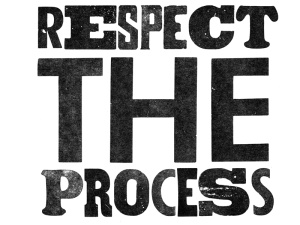ERP implementation involves many decisions and choices that can ultimately decide how effective your business operates. Your ERP system needs to be a tool that can facilitate the various business process flows within your organization. Too often managers, IT staff, or users feel the need to pursue the latest and greatest features and functions, even if that new functionality doesn’t fit well into their business or process scenario. While it is important to understand the features and functions offered by your ERP system so that new ideas and changes to the business can be discussed, supported, and implemented, functionality should not be the driver. The process should dictate the use of the ERP system.
NAV is a feature rich ERP system that might be a bit daunting if you just start poking around in the functionality and various master file setups. That is why one of the first steps any implementation needs is a thorough review of all the processes. The implementation team needs to listen and understand the user’s process, not only in one functional area but also how the output of that process flows to the next internal or external user or customer. It is also necessary to distinguish between the current state of the process and what the vision is for the process in the future. Diagrams, process flow charts, and value stream maps are all invaluable tools in regards to determining current and future states of a process. Often times, visualizing the process flow helps in understanding as well as evaluating a process. These visual documents often serve the implementation project well for discussions, setup, and implementation progress.
There is no doubt that ERP implementations or upgrades are a great time to introduce needed change into a business process. The thought is that while we're making changes to the system, let’s take the time to re-evaluate the processes. While it is true that ERP projects are a great catalyst to promote change, it may be too much change for the organization to handle. It is important to not only understand the process but also understand the individuals currently performing that process. Managers like process definition, in that it should eliminate variation but it is also important to understand how the people performing that process will react to changes in that process.
Once the process is documented and understood by all the parties involved, it is time to see how NAV can facilitate (not dictate) that flow of product or information. Again, it is important to use NAV as a tool to facilitate the process. Now is the time that a NAV application specialist can help setup and implement an efficient flow of information. It is truly efficient if it captures value added information at the right time and place to match the physical flow.
Here are some examples of how NAV can be used to facilitate the physical process:
- Process
- Throughout the day product moves from the production warehouse into the Finished Goods/Staging warehouse.
- NAV
- Recognize and capture output of product as it flows into the new location, backflush materials used with each output transaction.
- Simplify by using barcodes or quick entry.
- Now that finished product is available to transact (store it, pick it or sell it) to facilitate the next physical process.
Smaller batches of work result in better accuracy and control, as well as realtime info for the downstream process.
- Process
- The shipping process requires accurate documents to keep the supply chain flowing.
- NAV
- Utilize E-Ship functionality to print labels and documents that occur while the physical movement of product is taking place.
These documents are now using the most up to date information about that package and shipment, alleviating rework and providing the downstream customer accurate and timely information.
As we noted, there are many ways to configure NAV. Take the time upfront to document and solidify processes so that your application resources can use NAV as a tool to setup and facilitate an efficient and seamless implementation. Determine whether or not the organization can handle process changes along with information system changes. The process needs to be the foundation and cornerstone. Respect the Process!





